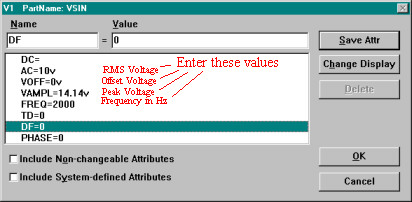I need to do a transient analysis of my BJT cascode amplifier. I was asked to use VPULSE as the source. I need to set VPULSE for +-10mV, 50% duty cycle square wave at 128 kHz with rise time and fall time of 10 ns.
In PSPICE, I had set the VPULSE's attribute as
V1=-0.01
V2 = 0.01
TR = 10ns
TF = 10ns
PW = 3.90625u
PER = 7.8125u
The transient analysis setting is
Print Step = 10ns
Final time = 9us
No print delay = 100ns
I would like to know how can I set my 50% duty cycle and is my analysis setting correct?
My simulation result shown above.

